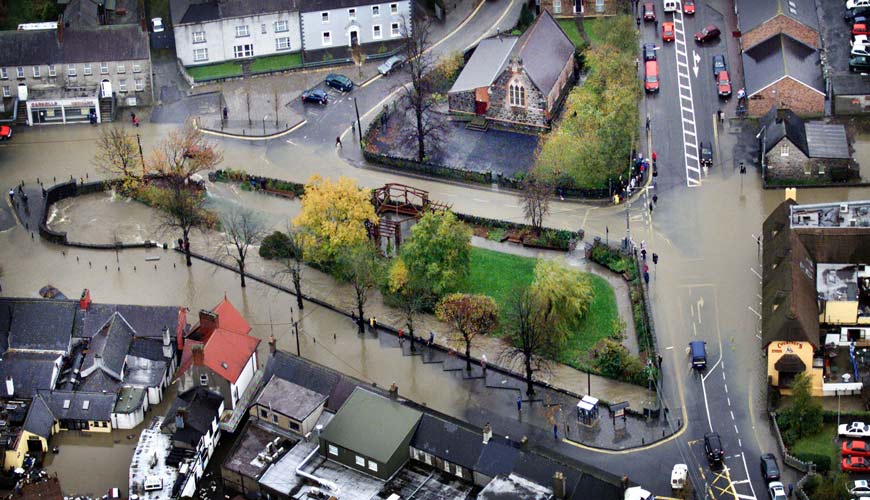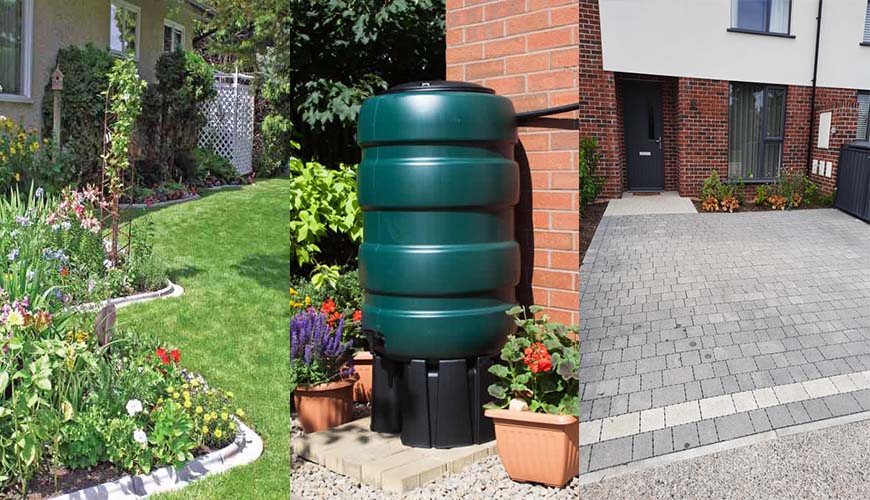Understanding Flood Resilience
As a coastal city with many rivers traversing it, flooding is an ongoing challenge for the Dublin Region. Rising sea levels and heavier rainfall events will mean an increased risk of flooding to vulnerable areas in the county.
Adding to the risk, urban areas like South Dublin contain many hard, human-made surfaces like roads, buildings, and paved ground. Many of these surfaces do not allow water to drain through them and the traditional way of dealing with excess surface water is to pipe it into the sewer system, however there are downsides to this approach – these include increasing flood risk elsewhere or polluting our watercourses for us and the wildlife that rely on them, as rainfall picks up human-made pollutants on the ground, ultimately ending up in the local stream or river.

South Dublin County Council is delivering a range of projects and initiatives which will help us to adapt to our changing climate and protect us from the devastation flooding can cause. The preference is on solutions that look to mimic nature, and that yield multiple benefits, for example Sustainable Drainage Systems (SuDS). SuDS work by holding rainwater back, treating pollution and releasing the water slowly without overwhelming the watercourse or sewer system into which it flows.
These nature-based solutions are complemented with several flood alleviation schemes which South Dublin County Council is currently delivering. Flood Alleviation Schemes at the Whitechurch, the Camac and the Poddle are in various stages of development. Delivering these schemes are actions in our Climate Change Action Plan 2019-2024.
Taking Action
As residents of the county, we can incorporate SuDS into our own households. Catching rainwater will reduce the risk of flooding, allowing you to play an active part in making South Dublin more climate resilient. To help, South Dublin County Council has produced a Householders Guide to Sustainable Drainage (SuDS) available here. A video has also been produced and can be viewed here.
The easy-to-use guide, which was prepared by industry experts, provides useful advice when thinking about what types of SuDS features might be appropriate for your homes and outlines key considerations before you start.
So what can you do?
- Adding hard surface patios and driveways to our homes increases the amount of water that enters local sewers, drains, and watercourses, so, if you have a garden or green space, consider keeping it natural. You could also consider removing an existing hard space back to the natural surface below.
- For any hard surface around the home, you can also install a permeable surface such as permeable paving, a reinforced surface that mimics nature but still gives the utility of paving. This allows water to pass through the paving into the ground below.
- Rainwater harvesting involves installing a water butt that collects water runoff from your roof, which you can then use again for certain activities such as garden watering when the rain is not falling.
- A green roof is a roof onto which vegetation is grown. They can work on flat roofs, garages, or extensions, for example, helping to absorb and slow rainfall and protect against flooding. Green roofs can also support biodiversity and add a visual amenity to your home or business, and in certain cases can be designed for use by you.
- Raingarden Planters & Raingardens: A raingarden planter is a container of water loving plants that sits at the bottom of a downpipe from your roof. It is an attractive, multi-purpose flood alleviation solution. A raingarden expands on this and exist as a depression dug into your soil into which you plant. It accepts water runoff from drains and reduces the impact on local waterbodies and the drainage system, whilst creating an attractive space in your garden.

Planning and Preparing
Preparation for flooding is also key at home. The Office of Public Works (OPW) maintain the Plan, Prepare, Protect website at www.flooding.ie, which aims to give practical help to homeowners and businesses who may be at risk from flooding.
The OPW also lead on the management of flood risk. Their plans and flood maps can be viewed at www.floodinfo.ie. You can also consult flood maps prepared by the Environmental Protection Agency of Ireland at www.epa.ie.

